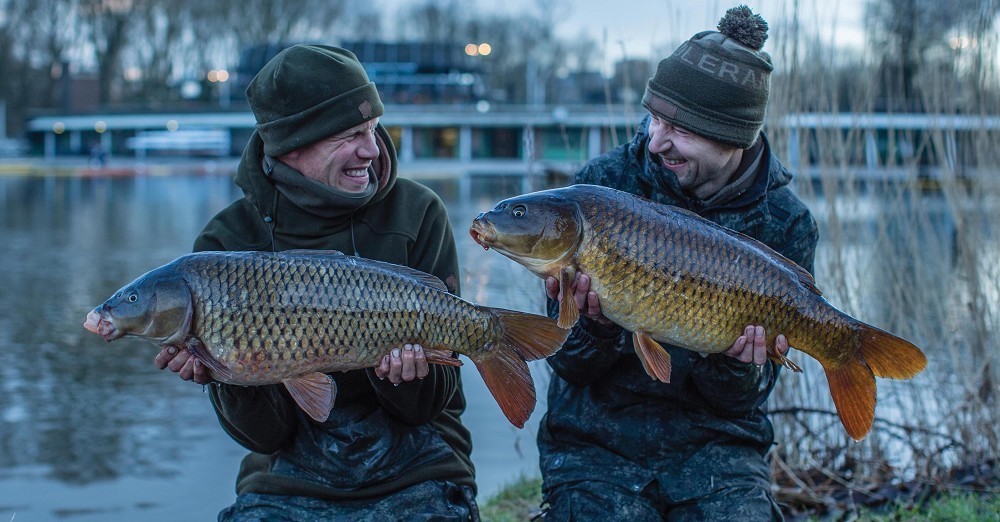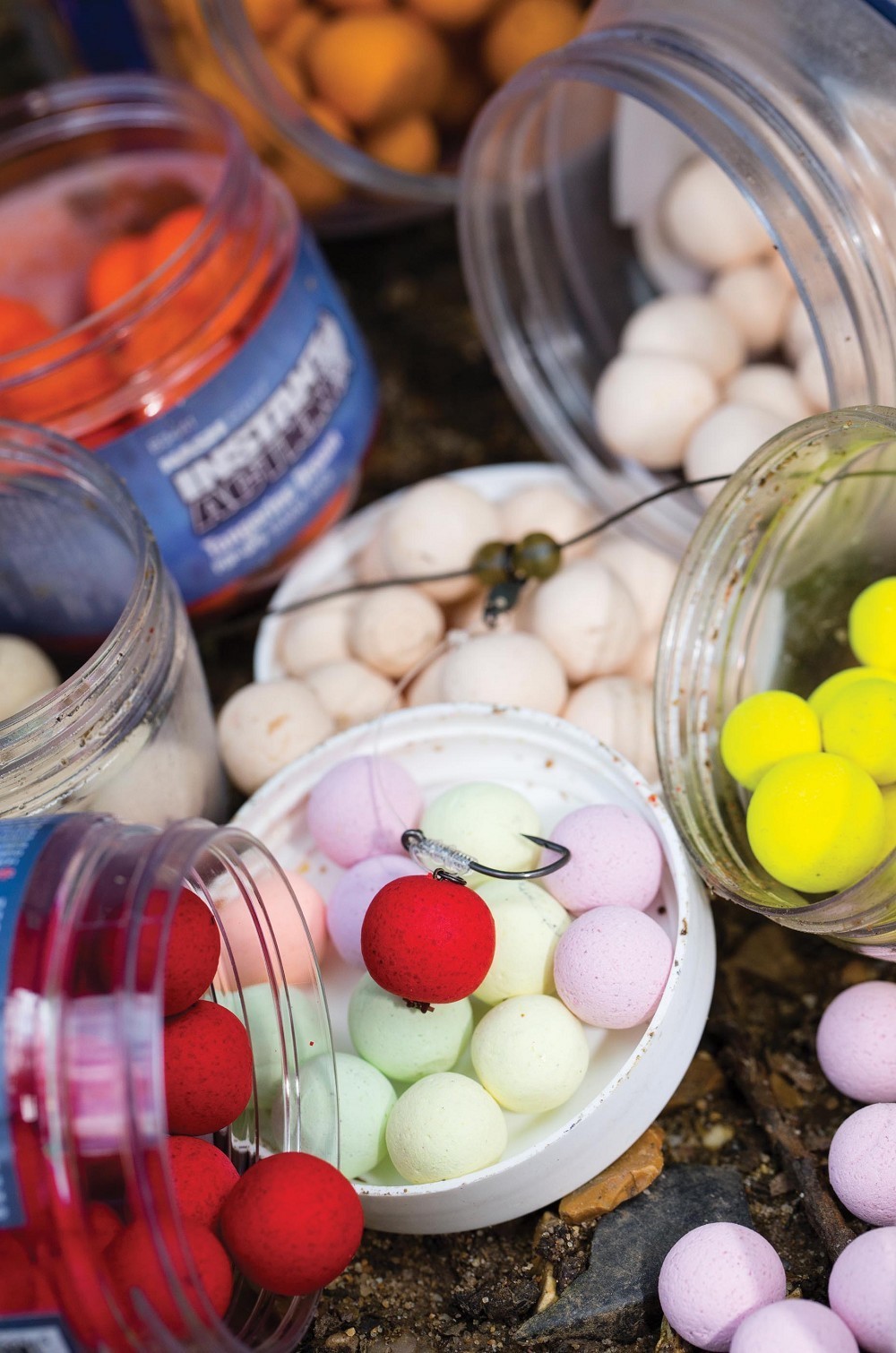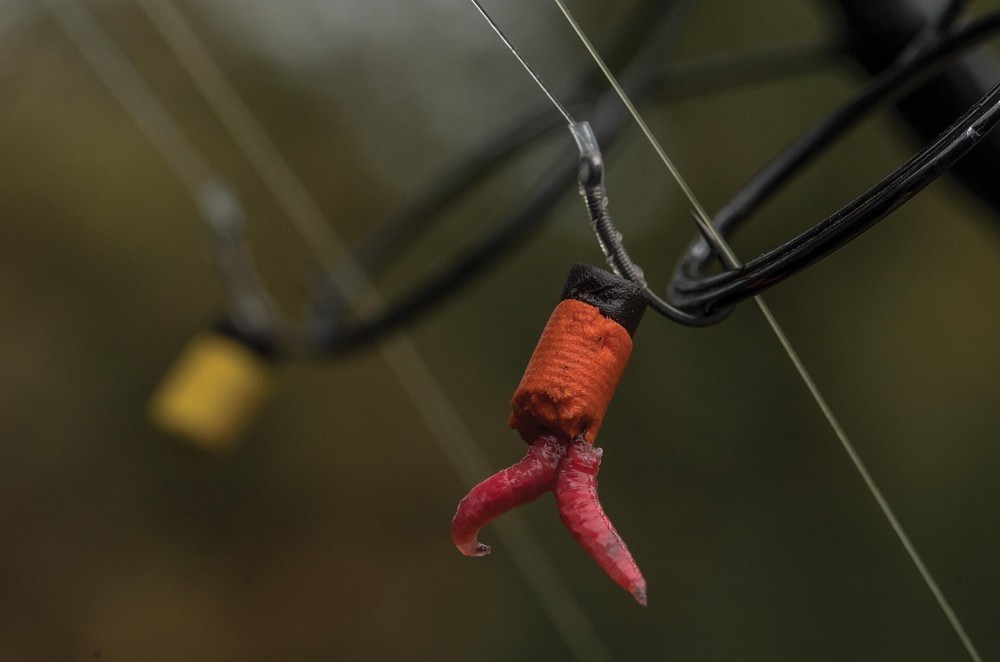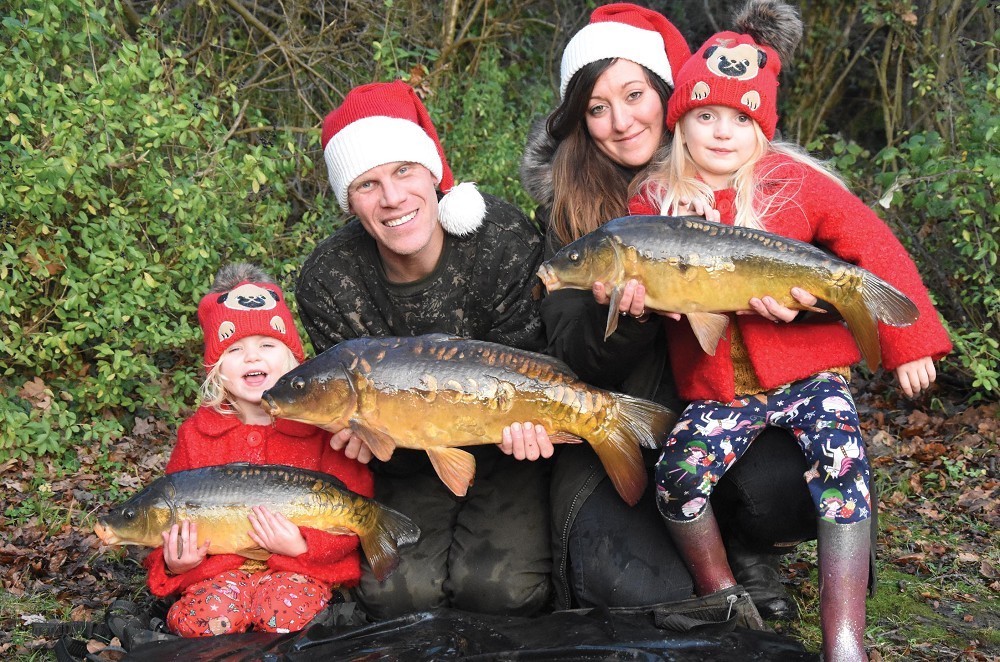
Alan Blair's 10 point guide to winter success
From fishing for liners to 'active Zig Rigs,' here's his best 10...
It’s the hardest time of year to target and catch carp. Their metabolism slows down in the cold and they become lethargic. They need to eat less and can potentially enter a state of dormancy. However, as carp anglers we still crave our fix and the need to get out there doesn’t diminish for me. While getting that fix is much harder than spring, summer and autumn, it’s not impossible. You just have to tweak and refine your approach. ALAN BLAIR
1. Find them!
Alan's advice: Just like in the warmer months, the most important thing is finding the carp. You need to be fishing where they are, you can’t rely on baiting up and waiting for the carp to stumble across it during the course of their day. They are not travelling far so you need to go to them. Places I would be looking are big sets of snags, reeds and rushes, dying weedbeds and lily pads and anywhere that is providing cover. If the lake is barren and deep, I will be looking at fishing off the bottom. Basically what you are looking for is an area of comfort. I liken it to being in a house with no heating and one small fire in one room. All the occupants will be gathered round that fire and it’s often the case with carp that they will congregate in an area that is perhaps only marginally more comfortable than the surroundings. That is where you will find the fish. Where that will be depends on your water and can only be answered by spending a little time there trying to work out that piece of the jigsaw.
2. Fish for liners
Alan's advice: If you can’t find carp directly by seeing them, you might be feeling stumped. The chances of them showing in the winter are also reduced. Without a boat it can be really tough to locate the fish. If you are restricted to bank fishing then one of the only options open is to fish for liners. Those fish might only be moving slowly and not far, but when they touch the line it can offer a vital clue as to their whereabouts. They are going to be grouped up so even one indication can be enough to help you locate the shoal. By moving regularly you increase your chances of casting into or through a group of fish so get mobile.
3. The right venues
Alan's advice: You might spend the warmer months slogging it out on tough waters, but in winter think about visiting a more suitable venue, appropriate to the conditions. I will definitely be looking for shallow venues because any milder weather and sun will warm the water up much quicker and keep the fish ‘awake’, moving and potentially still feeding. Obvious choices are park lakes and your local canal. The cut is always quieter with both foot and boat traffic in winter which is better for angling. On park lakes they rarely go to sleep, as you still get people feeding the birds right through the year so there is always food going in and movement. Don’t be embarrassed to visit your local day ticket or runs water. Be a realist. If you really want to get a bend in the rod then pay your tenner and catch a few carp.
4. Hold off on the bait
Alan's advice: Don’t go mad with the bait. I don’t scale down my tackle but I do scale down my baiting. They simply can’t digest it when the water is too cold, and they have no need to eat it. There is no point throwing in kilos. Unless conditions were really prime, then less is most definitely more. I fish singles a lot; I want to be using a sweetie or a lure. The hard work is done once you find them. I might add a small fizzing super attractive little Stick, or just fish a Cultured hookbait, a super-sweet pop-up or two bits of plastic corn glugged in Sweetcorn Extract. It will be something that the carp find irresistible. Even though they are not hungry, when you put something so nice in front of them you always stand a chance of tempting one. A bit like me with a cake after a big dinner!
5. Go looking
Alan's advice: In winter a lot of venues go clear, so use this clarity to your advantage to help find them, and also where they have been. It can be a good time to recce venues so you can actually see the bottom, where it has been cleaned and polished and potentially the fish themselves. Those snags that are normally coloured might be clear and the fish visible. At night, a super bright head torch can massively help, allowing you to see the fish clearly even when they are a fair way out
6. Zigs for deep lakes
Alan's advice: I mentioned tackling deeper venues and my go to tactic for these in winter is always Zigs. Often the fish will be sat off the bottom, especially on those venues of 20ft-plus. If they are sat midwater or higher in that depth, then a bait on the bottom is effectively nowhere near them. It’s still a big ask for the fish to drop down even 10ft to pick up a single bait. If you can position a lure in the zone in which they are sat, I believe there is a much greater chance of getting one to eat it. I try to make my Zig hookbait as attractive as possible with added flavour and even movement if possible, and I spray my foam between casts. Movement can be added with maggots, or even by tweaking the line when using adjustables in order to make the bait twitch.
7. Maggots and worms
Alan's advice: Naturals like worms and particularly maggots come into their own for carp in the colder months. When it’s warmer the other species can make their use impossible on many venues, but in the winter the presence and activity of roach and the like is much reduced as they hide from predators. This allows you to add them to your armoury, and I highly recommend you do. There is something about a natural bait that can trigger an aggressive feeding response from an otherwise torpid creature. You don’t need to use loads. I rarely spod out maggots, again, the fish are not really eating so a PVA bag full of maggots can be deadly effective.
8. Keep warm and dry
Alan's advice: Staying warm keeps you motivated. Don’t just wear the right clothes for the conditions. Make sure you remember to bring a flask, or the tea making kit so you can have a nice hot brew to warm you up. Bring food to keep the fire stoked - being hungry can also lead to feeling cold. When you begin to feel cold get up and move around. Once you have lost circulation to parts of the body it can be difficult to get warm again.
9. Short not long
Alan's advice: Consider fishing shorter sessions instead of slogging it out for your usual longer sessions. There is no point being out there and suffering if it reduces your motivation. Perhaps stick to day sessions when the nights are really cold. Rather than fishing the whole weekend, try fishing for a few hours on Saturday morning and then a few hours Sunday afternoon for example, breaking it up with some time spent at home with the family, or simply just have a change of venues mid-session to keep the motivation high! I fish a lot of short one or two hour sessions through the winter, especially with my two girls. It keeps us all interested and motivated and loving fishing.
10. Get on the rivers
Alan's advice: When all else is frozen and seems hopeless don’t forget or neglect the rivers. It is the final saviour for the die hard carpers who just refuse to be beaten by the worst conditions. Even when all else is a write off, there is always a chance in flowing water and I know that I still have a chance to catch a carp. Unlike their stillwater brethren, they have to keep moving in against the flow, and as a result they will have to feed regularly. It is likely the fish will be located in areas where the flow is less or there is shelter requiring minimum effort to hold station and easy access to food.









